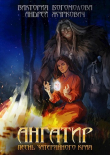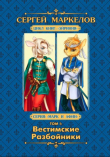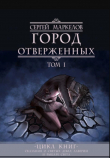
Текст книги "English Stylistics. Стилистика английского языка"
Автор книги: Валерий Гуревич
Жанр:
Иностранные языки
сообщить о нарушении
Текущая страница: 1 (всего у книги 5 страниц) [доступный отрывок для чтения: 2 страниц]
В. В. Гуревич
English Stylistics. Стилистика английского языка
Part 1
On the Notions of 'Style' and 'Stylistics'
In different situations of communication people use different manners of expressing their thoughts, which, in the Russian linguistic tradition, are usually called styles or functional styles (функциональные стили), and in the linguistic tradition abroad – registers of speech (регистры речи). Stylistics is a branch of linguistics that studies the various functional styles of speech and also the various expressive means and devices (экспрессивные средства и приемы) of language. Apart from that, some linguists apply the term 'stylistics' to the study of various stylistic peculiarities of the language of works of fiction (стилистика художественной речи).
The distinction between a lofty style and a low style of speech (высокий и низкий стили) was put forward as far back as in the 18th century by Michail Lomonosov. However, stylistics as a special branch of linguistics was singled out only towards the middle of the 20th century. Academician V. V. Vinogradov was among the first linguists to describe the different styles of speech in respect to their functions (= aims). He distinguished, in particular:
1) the colloquial style, which has the function of communicating (функция общения);
2) the official and scientific styles, which have the function of informing (функция сообщения);
3) the publicist (публицистический) and belle-lettres (художественно-беллетристический) styles, which have the function of producing an emotional impact (функция эмоционального воздействия) on the listeners.
This classification undoubtedly reflects certain differences between speech styles, although its criteria for the opposition of functions are rather confusing. Thus, for example, the functions of informing and communicating are present in any style (colloquial, official, scientific, publicist, belles-lettres), as speech always contains some information and is used for communicating. Therefore it would probably be more precise to say that the colloquial style is characteristic of the situation of direct communication (when the listener/interlocutor is present during speech), while the other, more bookish styles (official, scientific, publicist) are used in situations of indirect communication (without any listener/interlocutor present during speech).
Moreover, production of emotional impact on the listener/reader is not so much the aim of a special style of speech, but rather the aim of publicist or fiction (belles-lettres) works, which represent particular literary genres (жанры). It goes without saying that such works (texts) have also the function of informing. One more point to mention here is that the study of the language of various works of fiction constitutes a special branch in both linguistics and also in literature theory (литературоведение), and that fiction works themselves generally comprise samples (образцы) of both colloquial style (the speech of the characters) and of bookish style (the speech of the author).
Two Types of Stylistic Information
Every style of speech brings about with it some additional information about the conditions and peculiarities of communication. The choice of style may depend 1) on particular relations between the participants of communication (interlocutors) and 2) on a particular attitude of the speaker to what he says. These two types of stylistic information will be used below as the basis for the classification of styles.
From this point of view, functional styles express the first type of information, i.e. the relations between the interlocutors. In some situations these relations may be unrestrained (непринужденные), friendly, easy-going or intimate, and in that case the speaker chooses the so called informal style of speech, viz. the colloquial style, which is a 'lower' (сниженный) style of speech, characteristic of oral communication. In other situations the relations between the interlocutors may be restrained (сдержанные), strictly official, etc., and then the interlocutors try to be deliberately polite (подчеркнуто вежливыми), and they choose the so called formal style (the lofty, bookish style), which is generally characteristic of written language. The formal style is used in the genres of official or business documents, of scientific or publicist works. These genres, in their turn, may be further subdivided into more particular varieties of genres; for example, official documents may represent an order, instruction, resolution, proceedings of a meeting (протокол заседания), report, application (заявление), etc.
It is natural for speakers to try to avoid any confusion of formal and informal styles within one text, as such a confusion might give the wrong idea of the relations between the interlocutors: e.g. a letter to a person of higher authority cannot begin with words like 'Hi, how are you doing?', which would bear a sense of familiarity. But at the same time it is well worth mentioning that there may be samples of speech (oral or written) which are not clearly marked by features of any particular style, and which can therefore be regarded as a «neutral» style, suitable for any communicative situations.
Besides the formal and informal functional styles mentioned above (which reflect the relations between interlocutors), there are also stylistic characteristics of speech that reflect the attitude of the speaker to the content of his speech. This second type of stylistic information concerns the emotional character of speech, viz. the presence or absence of emotional or evaluative (оценочный) elements. In this respect we can distinguish:
1) an emotionally coloured style of speech
2) a deliberately unemotional (подчеркнуто безэмоциональный), or «cold» style of speech
3) a neutral style of speech
Emotionally coloured speech may be characterized, on the one hand, by a lofty emotional colouring (приподнятая эмоциональная окраска), such as solemn (торжественная), passionate (патетическая), ironic, wrathful (гневная), sarcastic (саркастическая), etc., or, on the other hand, by a lower colouring (сниженная окраска), such as jocular/humorous (шутливая), derogatory (уничижительная), rude (грубая), disapproving (неодобрительная), endearing (ласкательная), etc.
The lofty emotional colouring is characteristic of the publicist/oratory style, while the lower emotional colouring is typical of colloquial style. The deliberately unemotional character of speech is typical of the formal ('cold') styles, such as scientific, official or business speech, where the speaker tends to make his speech impersonal and avoid any emotional or evaluating elements.
Apart from the two directly opposed styles – the emotionally coloured and the deliberately unemotional – there may also be intermediate, stylistically neutral speech, which is neither emotionally coloured nor deliberately devoid of emotion. Thus, there may be samples of speech that are neutral both with respect to the relations between the interlocutors and with respect to the speaker's attitude toward what he says.
Stylistic differences of any kind can be expressed by various language means: phonetic, lexical or grammatical. One of the most vivid means is, naturally, the choice of vocabulary.
Stylistic Characteristics of English Vocabulary
With respect to the functional styles, vocabulary can be subdivided into bookish (literary), which is typical of formal styles (scientific, official, business, publicist), and colloquial vocabulary which is typical of the lower style (colloquial). In addition, there is always present in the language a stylistically neutral vocabulary, which can be used in all kinds of style. Cf:
child (neutral) – kid (colloq.) – infant (e.g. infant schools – official, bookish) – offspring (also bookish, used in scientific works);
father (neut.) – daddy (coll.) – male parent/ancestor (formal);
leave/go away (neut.) – be off/get out/get away/get lost (coll., or familiar– colloquial) – retire/withdraw (bookish);
continue (neutr.) – go on, carry on (coll.) – proceed (bookish, formal);
begin/start (neutr.) – get going/get started/Come on! (coll.) – commence (formal);
Stylistically neutral words usually constitute the main member in a group of synonyms, the so-called synonymic dominant (синонимическая доминанта): they can be used in any style, they are not emotionally coloured and have no additional evaluating elements; such are the words child, father, begin, leave/go away, continue in the examples above.
Unlike neutral words (synonymic dominants), which only denote (обозначают) a certain notion and thus have only a denotational meaning (денотативное значение, обозначение некоторого понятия), their stylistic synonyms usually contain some connotations (коннотации), i.e. additional components of meaning which express some emotional colouring or evaluation (оценка) of the object named; these additional components may also be simply signs of a particular functional style of speech. Observe, for example, the following connotations:
an endearing connotation (ласкат.) – e.g. in the words kid, daddy, mummy (as different from the neutral words child, father, mother); derogatory (презрит.-уничижит.) connotation – e.g. in rot, trash, stuff (as different from the neutral 'something worthless or silly'); jocular/humourous – e.g. in comestibles (=food), beak ( = nose), to kick the bucket (= to die); rude or vulgar, e.g. in shut up/shut your trap; ironical or sarcastic – brain-wash (= промывка мозгов), a pretty kettle of fish (= an embarrassing situation), notorious (= пресловутый; his notorious jokes; he is notorious for his bad behaviour – «славится», т.е. «печально известен»); approving evaluation (одобрительная оценка) – e.g. in the word renowned (a renowned poet = прославленный; Edison is renowned for his great inventions); on the other hand, its synonyms like well-known, famous are neutral in this respect (have no connotations).
It should be noted that we do not include into the stylistically coloured vocabulary words that directly express some positive or negative evaluation of an object – хороший, плохой, красивый, некрасивый, прекрасный, уродливый; good, bad, pretty, ugly. Here the evaluation expressed makes up their denotational meaning proper (it represents the notion expressed by the word), but not an additional connotation. Also, it is easy to notice that words like ugly, awful, beautiful, wonderful, superb denote a high degree of quality (negative or positive), but this component of degree (of intensity) is again part of their denotational meaning, not a connotation (which is understood as an additional element accompanying the denotational meaning of a word).
As connotation proper (a special colouring), negative evaluation is present e.g. in the word scary (a scary girl — cf. the Russian страшненькая; both words have an ironic or derogatory colouring) or pretty — when it is used in phrases like a pretty boy/man (humorous, ironical or derogatory connotations; cf. also the Russian красавчик, красотка), or a pretty state (It's a pretty state of affairs when I can't afford the price of a pint of beer any morel). That's a pretty kettle of fish (= ну и дела!); there is ironical connotation in the word cox-comb (literally «петушиный хохолок»), like in the corresponding Russian word щеголь, or in a cock of the walk (зазнайка).
There is a derogatory connotation in the words to fabricate, to concoct (сфабриковать, выдумать), as different from the neutral phrase 'to create a false story' (which expresses the negative evaluation by the denotational meanings of the words); there is a negative evaluative connotation in to slander (клеветать) – as different from emotionally neutral expressions like to distort facts (искажать факты), which again express the idea of 'falsification' directly. In the sentence Don't read this bad book the negative evaluation is expressed directly (by the denotational meaning of the adjective bad), whereas in Don't read this trash the evaluation is expressed by the derogatory colouring of the noun trash — in other words, it is present here only as a connotation; thus, words like trash, rot, stuff (= «something worthless, bad») are stylistically marked (стилистически маркированы, т.е. обладают определенной стилистической окраской), while the word bad is stylistically unmarked (стилистически немаркировано, нейтрально).
Apart from that, as was already mentioned above, the stylistic connotation of a word may be just a sign of a certain functional style to which the word belongs, without carrying any emotional or evaluative element. Thus, sentences like She is cute (= pretty), It is cute (= very good), It's cool (Это круто) contain not only a high positive evaluation (in the same way as the stylistically neutral variants She is pretty/good-looking or It is very good), but also a stylistic connotation which shows that they belong to the familiar-colloquial style (фамильярно-разговорный стиль), or even to slang. Colloquial connotations are also present in the phrases to fix a watch (neutral – to repair a watch), to fix an appointment for seven o'clock (= to arrange), to fix breakfast (American – to cook breakfast). On the other hand, a bookish connotation, or colouring (as a feature of official or scientific style of speech) is present in expressions like to cause/to inflict bodily injuries (neutral – to hit/to beat/to hurt), to cause/to inflict damage (neutr. to harm/to do harm), to impose a tax/a fine (neutr. to tax/to fine), an impoverished person (neutr. a poor person), highly improbable (neutr. very unlikely), etc.
A rude (vulgar) connotation is present in vulgarisms, or taboo words, which are not to be used in the speech of educated people and are therefore often replaced by euphemisms (эвфемизмы) – the more 'gentle' names of the object. Thus, the word 'devil' is, for many people, unacceptable in speech and may be replaced by phrases like 'the evil one', 'the fallen angel', 'the Prince of darkness',' Lucifer', 'Mephistopheles'. The same concerns expletives (curse-words, бранная лексика): damn, damned are often replaced by the euphemistic darn, darned, dashed; bloody is sometimes replaced by blooming, blasted, blessed, etc.
Some Characteristics of English That Are Close to Stylistic Ones
a) Territorial Varieties of EnglishWith respect to the accepted literary norm (standard) of the language, we distinguish Standard (Received) English (the variant that is fixed in the written language, in works of fiction, in radio and TV speech, etc.), and non-standard English (не входящий в литературную норму), which is represented by dialects and variants of the language found in the different geographical areas where English is used. To the dialects are usually referred the non-standard varieties of English used on the territory of Great Britain, while the word variants (varieties) refers to the use of English outside this territory, e.g. the English language of the USA, Canada, Australia, New Zealand, etc.
English dialects are divided into northern (including the Scottish dialect) and southern (including 'cockney', the dialect of the area south of London).
The Scottish dialect comes back to the Gaelic language (гаэльский язык), a language of Celtic origin (кельтский) and to the Scottish (Scots) language (one of the Germanic languages): cf. such words used by speakers of English in the area of Scotland as bairn (=child), auld (= old), ben (= mountain), bonnie (= beautiful), canny (= careful), brae (= slope, bank), haggis (= pudding), ilka (= every), keek (= look), kirk (= church), laddie, lassie (= boy, girl), loch (= lake). The pronunciation of Scottish dialectal words may also have some peculiarities, e.g. [u:] instead of [au], e.g. [hu:s] (= house), [u:t] (= out), [du:n] (= down); [ai] instead of [ou] – e.g. [stain] (= stone), [bain] (= bone), [raid] (= road), etc.; long [ae] instead of long [a:] in certain words, e.g. [daens] (= dance), [laest] (= last); the consonant [r] is produced by vibration of the tip of the tongue. The poet Robert Burns wrote in the Scottish dialect.
The Southern dialect of English is phonetically characterized by the dental-nasal [n] instead of the purely nasal [ng] (He is doin'/sittin', instead of 'doing', 'sitting'); by the loss of the consonant [h] in the initial position: [ia] (=hear), [art] (= heart), etc. Elements of this dialect can be observed in the speech of the characters in the novels of Thomas Hardy (19th century English classical writer).
The Irish dialect of English is spread in Northern Ireland, which is part of the UK. It is not the Irish language itself (which is of Celtic origin and is spoken in the Irish Republic – in the southern part of the island), but a variety of English, which includes: Irish words: girsha (= little girt), gaurlagh (= baby), colleen (= young girl), donny (= of weak health), cardia (= friendship); also – English words with a changed meaning: likely (= good), bravely (= very well), to join (= to cry), able (=strong), harvest (= autumn), to learn smb. (= to teach).
Variants of English used outside the territory of Great Britain are found in the former British colonies. One of the most notable and widespread is the American variant, which has preserved some of the features of the English language of the 17th century (the period of Early New English – the language used by the first British settlers in America). It has certain peculiarities of pronunciation, which include: the pronunciation of the sound [r] in any position in the word (girl, here) and the retroflexive articulation of this sound (as different from its alveolar articulation in British English); the substitution of the vowel [ae] for the long [a:] in ask, last, after, grass, laugh, chance, etc. (as in the Scottish dialect); pronunciation of the back lower variant of the vowel [a] instead of [o] in words like hot, pot, stop, cop, college, etc.; the loss of [j] before the vowel [u] after some consonants: cf. [su:t] for suit, [nu:] for new, [tu:n] for tune, [duti] for duty; the use of the dark variant of the consonant [l] in all positions; the voicing of some voiceless consonants in interlocal position (better, letter, closer); a slight nasalisation of vowels before or after nasal consonants (can't, stand).
There are also differences in vocabulary, e.g. fall (British – autumn), guess (= think), baggage (= luggage), drug (= medicine), store (= shop), can (= tin), elevator (= lift), hardware (= ironmongery), grades (= marks), mail (= post), bill (= banknote), to pay a check (= to pay a bill), gas (= petrol), hog (= pig), to line (= to queue up), movies (= pictures, cinema film), stocks (= shares), information desk (= enquiry-office), sidewalk (= pavement), carousal [karu'sel] (= merry-go-round), vacation (= holiday), class (= form; the boy is now in his first class at school), closet (= cupboard), candy (= sweets), sick (= ill), ten minutes after five (= past five), etc. As for grammar forms, American English uses gotten instead of got, and the future auxiliary will with all the persons. It also prefers simplified variants of spelling: color (=colour), favorite (= favourite), theater (=theatre), center (=centre), telegram (= telegramme), etc.
b) English Vocabulary in the Aspect of TimeBesides the vocabulary that is in current (present-day) use, we also find archaic or obsolete (устарелые) words, which belong to some previous stage of language development but can still be found in works of fiction (especially in the works of Shakespeare, Chaucer, Swift or other classical authors). Cf. the archaic words Behold! (= Look!), Hark! (= Listen!), methinks (= I think), Nay (= no), Wither are you going? (= Where are you going to?), hither and thither (= here and there), thou/to thee (= you/to you), whilst (= while), awhile (= for some time), yon (= this, that), yonder ( = there), etc.
Archaic words are frequently used in poetry and thus belong also to poetic vocabulary (poetic diction): cf. quoth (= said), woe (= sorrow), swain (= shepherd), foe (= enemy), steed/charger (= horse), realm (= kingdom), nought/naught (= nothing), ere (= before), albeit (= although); here also belong certain shortened variants of the currently used words, e.g. oft (= often), eve (= evening), morn (= morning), etc.
The vocabulary that has gone out of use also includes the so called 'historisms' (историзмы) — words which reflect some phenomena belonging to the past times, e.g. knight (рыцарь), yeomen (йомены, independent peasants in old England), archer (лучник), sling (праща), ram (таран); cf. also Russian historisms like городничий, городовой, бояре.
On the other hand, we can also find in English vocabulary the so-called 'neologisms', i.e. words that have recently come into the language and are still felt as rather new: allergy, computer, astronaut, isotope, quasar, laser, aliens, supermarket, chain-stores, bikini, mini/maxi/midi (of clothes), paperbacks, etc.
Comparatively new borrowings from other languages, which are not yet completely assimilated in the language (phonetically or grammatically), are stylistically marked as 'foreign' words (sometimes, as barbarisms); they usually belong to a lofty (bookish) style: e.g. protège, a propos, bonjour, idée fixe, chic (= of very good taste, fashionable), alter ego (= one's second self), de facto (= in point of fact), status quo (= the existing state of things), ibid/ibidem (= by the same author), etc., viz. (= videlicet) (namely).




































